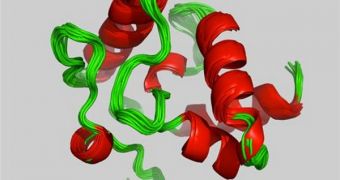Structural biology is a fast-growing field of research, in which the only tool scientists have that allows them to peak at the 3D structure of a molecule is something called Nuclear Magnetic Resonance (NMR) spectroscopy. The technique is especially suitable for this kind of operations, but, considering that it is currently being pushed further and further away, it stands to reason that it will soon reach its limitations, leaving scientists without any means of looking at the basic structures that allow us to live.
In order to avoid that, experts have started the “eNMR” project, which aims at finding ways of improving the method, and ensuring that it continues to be useful to investigators for years to come. The September issue of the respected journal Nature Methods features an invitation to all those making up the NMR community, to contribute to the project, and attempt to develop new types of super-advanced computational algorithms to benefit this type of spectroscopy, AlphaGalileo reports.
The stated goal of this initiative is to improve the efficiency, reproducibility and reliability of all NMR structure determinations. According to those behind the project, it will benefit from the support of the Enabling Grids for E-sciencE infrastructure. “Insight into the shape of biomolecules is the starting point for designing new drugs. If we can improve this technology, it will help researchers in structural biology to be more productive. This could help shorten the whole process of designing new drugs,” eNMR project member Alexandre Bonvin, one of the authors of the new paper, explains.
The new challenge will also be supported by the United States National Institute of Health (NIH) Protein Structure Initiative, in addition to the eNMR project. Participants would have to devise new methods of automating NMR calculations, and also of testing them against blind datasets, for an increased accuracy. “At this time fully automated methods are not reliable enough to be used blindly; this CASD-NMR [Critical Assessment of automated Structure Determination of proteins by NMR] experiment will be a valuable tool to see where we stand in automation and improve our methods,” Bonvin concludes.

 14 DAY TRIAL //
14 DAY TRIAL //